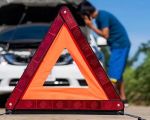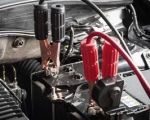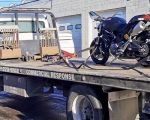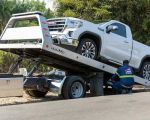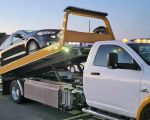Roadside Breakdown Guide: How to Handle Car Failures on the Road
Experiencing a car breakdown is never a pleasant situation, and it often happens at the worst possible time. Whether it's a flat tire, engine failure, or a complete loss of power, the moments following a roadside breakdown can be stressful and confusing. However, understanding what to do in these situations can reduce stress, minimize damage to your vehicle, and ensure your safety while waiting for roadside assistance. This comprehensive guide will walk you through the essential steps to take when you find yourself stranded on the road, provide expert advice on preventing breakdowns, and offer insight into when and how to get professional help.

AutoZone Auto Parts
5701 Broadway, Bronx, NY 10463, USA
1. Common Causes of Roadside Breakdown
Before diving into the steps for handling a roadside breakdown, it’s helpful to understand some of the most common causes of car failures. Knowing what to watch out for can help you prevent breakdowns or at least anticipate issues before they occur. Here are some of the main reasons why vehicles break down on the road:
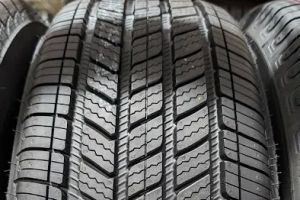
Costco Tire Center
1250 Old Country Rd, Westbury, NY 11590, USA
1.1 Battery Failure
One of the most common reasons for a roadside breakdown is a dead or faulty battery. Over time, a battery can lose its ability to hold a charge, especially if it is old or improperly maintained. If you notice that your car is slow to start, has dim headlights, or shows electrical issues, it may be a sign that your battery is on its last legs. Keeping a jump starter or jumper cables in your vehicle can help you quickly address this issue when it happens.
1.2 Flat Tires
A flat tire is another frequent cause of car breakdowns. Sharp objects like nails, glass, or debris on the road can puncture your tire, causing it to deflate. While modern cars have spare tires, some vehicles, especially luxury or sports models, may only have a tire repair kit or no spare tire at all. It's always a good idea to check your tire pressure regularly and be prepared with the necessary tools in case of a flat.
1.3 Overheating
Overheating is another common issue that can lead to a breakdown. If your engine is running too hot, it can cause serious damage to critical components, including the radiator and the engine itself. Causes of overheating include low coolant levels, a malfunctioning thermostat, or a damaged radiator. If you notice the temperature gauge rising, pull over immediately to avoid causing further damage to the engine.
1.4 Engine Failure
Engine failure is often a result of poor maintenance or mechanical issues. Issues like a failed alternator, fuel system problems, or even running out of gas can cause your engine to fail unexpectedly. If you notice strange noises, loss of power, or strange vibrations, it’s important to address the issue as soon as possible to prevent a complete engine failure that might leave you stranded on the road.
2. What to Do When Your Car Breaks Down
When your car breaks down, the most important thing is to remain calm and take the necessary steps to ensure your safety. Here's a step-by-step guide on what to do when you find yourself stranded:
2.1 Pull Over to a Safe Location
As soon as you realize that your car is not functioning properly, it’s important to get off the road as quickly as possible. Try to pull over to the side of the road in a safe and visible spot, away from traffic. If you're on the highway or in a busy area, try to get off the exit ramp or to a parking lot if possible. The safer the location, the less risk there is for accidents while waiting for assistance.
2.2 Turn on Your Hazard Lights
To alert other drivers to your situation, turn on your hazard lights. This makes it easier for other motorists to spot you, especially in low-visibility conditions like rain or fog. Keep your hazard lights on until help arrives.
2.3 Assess the Situation
Once you're safely off the road, assess the situation. If the issue is something you can handle, such as changing a flat tire or adding coolant to the radiator, take the necessary steps. If you're unsure or the problem seems too complicated to fix yourself, it’s time to call for professional roadside assistance. Keep in mind that continuing to drive a car with an unresolved issue could cause further damage, so it's better to seek professional help when in doubt.
2.4 Call for Roadside Assistance
If you're unable to solve the issue yourself, it’s time to call for roadside assistance. Many insurance companies, as well as independent service providers, offer emergency roadside assistance plans that cover towing, tire changes, battery jump-starts, fuel delivery, and minor repairs. When calling for assistance, be sure to provide clear details about your location, the nature of the issue, and the make and model of your vehicle to ensure the service provider can arrive fully prepared.
3. Roadside Assistance Services and What They Offer
Roadside assistance services are designed to help drivers when they experience unexpected car problems on the road. These services can vary depending on the provider and the specific plan you have, but they typically offer a range of solutions to get you back on your way:
3.1 Towing Services
If your vehicle is unable to be repaired on the spot, a towing service will transport your car to a safe location, such as a mechanic's shop, auto repair center, or your home. Most towing companies use flatbed trucks to avoid causing further damage to your vehicle during transport, especially if the car cannot be driven safely.
3.2 Tire Change and Repair
For flat tires, many roadside assistance services offer tire changing and repair. These services often provide a spare tire, but it’s important to check that your vehicle has one before you need it. If your car doesn't have a spare or if the damage is too severe, the service may tow your vehicle to a repair facility.
3.3 Jump-Start Services
If your car won't start due to a dead battery, many roadside assistance services provide jump-starts. They’ll use professional equipment to boost your car’s battery so you can continue driving to a nearby service center for a permanent fix. It's a simple solution for getting you back on the road quickly and avoiding the need for a tow.
3.4 Fuel Delivery
Running out of fuel is a common reason for a breakdown, and fortunately, many roadside assistance providers offer fuel delivery services. They can bring enough fuel to get your car started, allowing you to drive to the nearest gas station. This service is often provided for a nominal fee, and it's a quick way to avoid waiting for a tow in case of fuel shortages.
4. Preventing Future Roadside Breakdowns
While breakdowns are sometimes unavoidable, there are several steps you can take to reduce the likelihood of experiencing one in the future:
4.1 Regular Vehicle Maintenance
Regular maintenance is key to keeping your car in good working condition and preventing breakdowns. Schedule routine check-ups with your mechanic to inspect critical components such as the battery, brakes, tires, fluid levels, and engine health. Preventive maintenance can catch problems before they become serious, saving you time and money in the long run.
4.2 Keep Emergency Supplies on Hand
Keeping an emergency kit in your vehicle can help you address small issues and stay safe while waiting for professional help. Your kit should include basic items such as jumper cables, a flashlight, a spare tire, tire changing tools, a first-aid kit, and non-perishable snacks and water. These items can be invaluable in helping you manage minor problems on the road.
4.3 Invest in Roadside Assistance Coverage
Having roadside assistance coverage can give you peace of mind when driving. Many insurance policies offer roadside assistance as an add-on or as part of their packages. If you frequently travel long distances or in rural areas, this type of coverage can be a lifesaver, ensuring that help is just a phone call away in the event of a breakdown.
5. Real-Life Example: A Breakdown During a Road Trip
Last year, a driver named Mark was traveling through the mountains when his car suddenly lost power. He pulled over safely to the side of the road and noticed that his car’s engine was overheating. Mark had roadside assistance coverage through his insurance policy and quickly called for help. Within 30 minutes, a professional technician arrived to assess the situation, and Mark’s car was towed to a nearby repair shop. The issue was resolved within a few hours, and Mark was back on his road trip without much delay. Thanks to the quick response and expert service, what could have been a major setback turned into a minor inconvenience.
Understanding how to handle a roadside breakdown and having the right coverage in place can make all the difference when your car fails unexpectedly. By following the proper steps and knowing when to call for professional help, you can reduce stress and get your car back on the road as quickly and safely as possible.


















